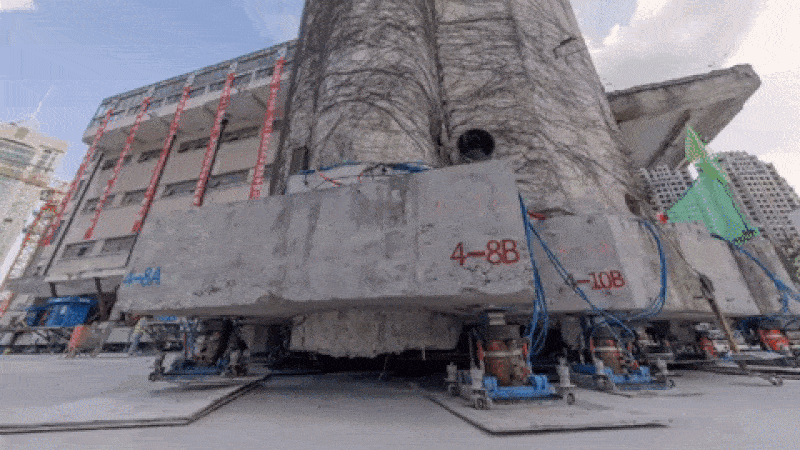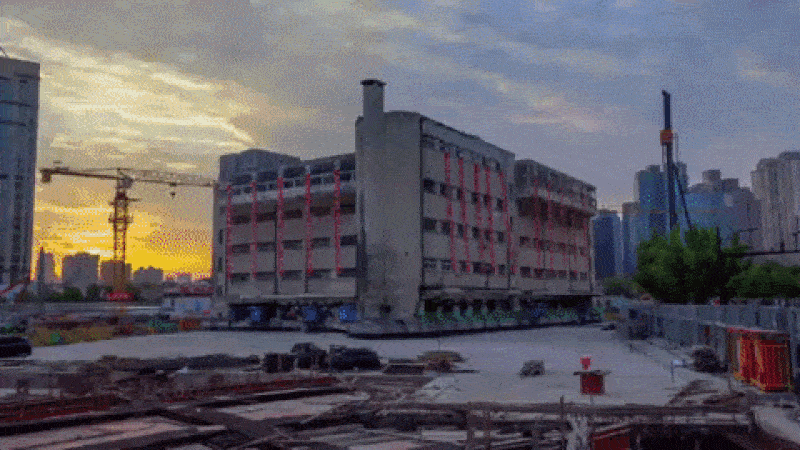Heritage School ‘Walks’ to New Location
An 85-year-old primary school has been lifted off the ground—in its entirety—and relocated, using state-of-the-art technology dubbed the “walking machine”.
The Lagena primary school in central Shanghai is now set to become a centre for heritage protection and cultural education after being moved to make space for a new office complex.
Construction technology company Shanghai Evolution Shift are responsible for the engineering feat, which involved 200 mobile supports.
The hydraulic lifts were split into two groups, alternately rising up and down in order to “walk” the 7,600-tonne building.
Over the course of 18 days, the building was rotated 21 degrees and moved 62 metres to its new location.

According to Shanghai Evolution Shift, the innovative method shortened the relocation schedule by 20 per cent, compared to traditional relocation methods using rails or flatbeds.
“It’s like giving the building crutches so it can stand up and then walk,” Shanghai Evolution Shift chief technical supervisor Lan Wuji told CNN.
The exact cost of the relocation project was not disclosed, with each potential project priced on a case-by-case basis.
“It can’t be used as a reference, because we have to preserve the historical building no matter what,” Lan said.
“But in general, it’s cheaper than demolishing and then rebuilding something in a new location.”
The new commercial precinct set to be built on site, which will comprise 390,000sq m of office space and residential offerings, is expected to be completed in 2023.
The school is set to be renovated before students return.

According to the Huangpu district government, the project marks the first time the “walking machine” technology has been used in Shanghai to relocate a historical building.
In recent decades, China’s rapid modernisation has seen many historic buildings demolished, with calls for a greater focus on architectural heritage and preservation.
Cities including Shanghai have launched new conservation campaigns including, on occasion, the use of advanced technologies that allow old buildings to be relocated rather than demolished.
In 2003, the Shanghai Concert Hall, built in 1930, was moved more than 66 metres to make way for an elevated highway.
A six-storey warehouse, also from the 1930s, was moved 38 metres as part of a local redevelopment in 2013.
More recently, in 2018, the city relocated a 90-year-old building in Hongkou district, in what was then considered to be Shanghai’s most complex relocation project to date.















